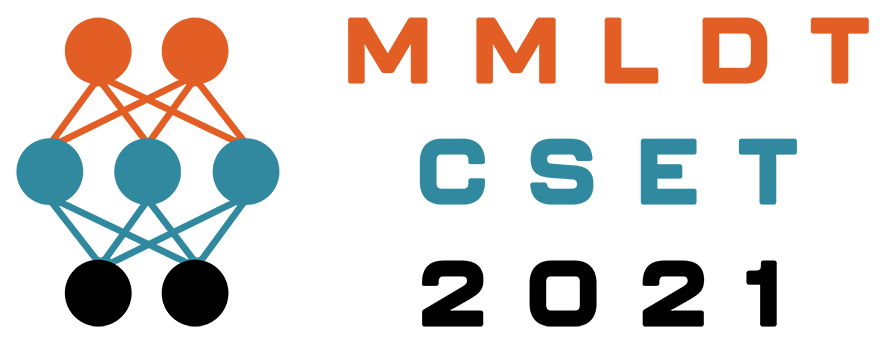Supplementary materials & lecture notes
The Jupyter notebooks and reading materials can be found in the Google Drive URL: [URL]
All Juypter notebook has been tested and ran in Google Collaboratory to run the Jupyter notebooks. More information will be posted in the Blog page periodically. Please send any question, comment or suggestion to [email protected]. Please cite the corresponding references (see below) if you adopt or modify the code we provided in your research.
All Juypter notebook has been tested and ran in Google Collaboratory to run the Jupyter notebooks. More information will be posted in the Blog page periodically. Please send any question, comment or suggestion to [email protected]. Please cite the corresponding references (see below) if you adopt or modify the code we provided in your research.
Lectures
Lecture 1: Training constitutive laws with supervised learning (Instructor: Sun) [Slide][Video]
Lecture 2: Reduced-order modeling for fractures and thermal fatigues (Instructor: Chen) [Slide][Video]
Lab Session 1: Convolutional Neural Networks (CNNs) for Crack Detection (Instructor: He) [Video]
Lecture 3: Manifold learning and auto-encoders in nonlinear materials modeling (Instructor: Chen) [Slide][Video]
Lecture 4: Deep reinforcement learning for knowledge graph based models (Instructor: Sun) [Slide][Video]
Lab Session 2: Generating constitutive laws from sub-scale DNS simulations (Instructor: Vlassis & Yin) [Video]
Lecture 2: Reduced-order modeling for fractures and thermal fatigues (Instructor: Chen) [Slide][Video]
Lab Session 1: Convolutional Neural Networks (CNNs) for Crack Detection (Instructor: He) [Video]
Lecture 3: Manifold learning and auto-encoders in nonlinear materials modeling (Instructor: Chen) [Slide][Video]
Lecture 4: Deep reinforcement learning for knowledge graph based models (Instructor: Sun) [Slide][Video]
Lab Session 2: Generating constitutive laws from sub-scale DNS simulations (Instructor: Vlassis & Yin) [Video]
Tutorials
|
Topics
Tutorial 1: Introduction to machine learning for mechanics
Tutorial 2A: Setting up machine learning environment Tutorial 2B: Tutorial of Jupyter notebooks and Python Tutorial 2C: Introduction to convolutional neural network Lab Session 1: Convolutional neural network for crack detection |
Study Materials
|
Lecture Slides
|
Lecture Video
|
|
Tutorial 3A: Training neural network constitutive laws. Part I: supervised learning, physics constraints and validation
Tutorial 3B: Training neural network constitutive laws. Part II: PyTorch vs. Tensorflow Tutorial 3C: Training neural network constitutive laws. Part III: Incorporating microstructures with geometric learning Tutorial 4: Deep reinforcement learning for knowledge graph of plasticity models Lab Session 2: Generating constitutive laws from sub-scale DNS simulations |
Jupyter Notebook
(Tensorflow) Jupyter Notebook (PyTorch) Jupyter Notebook (PyTorch Geometric) Jupyter Notebook (Collaboratory) |
Reference
- Lee, C. H., & Chen, J. S. (2013). Proper orthogonal decomposition‐based model order reduction via radial basis functions for molecular dynamics systems. International journal for numerical methods in engineering, 96(10), 599-627.
- Chen, J. S., Marodon, C., & Hu, H. Y. (2015). Model order reduction for meshfree solution of Poisson singularity problems. International Journal for Numerical Methods in Engineering, 102(5), 1211-1237.
- He, Q., Chen, J. S., & Marodon, C. (2019). A decomposed subspace reduction for fracture mechanics based on the meshfree integrated singular basis function method. Computational Mechanics, 63(3), 593-614.
- K. Wang, W.C. Sun. Meta-modeling game for deriving theory-consistent, micro-structure-based traction-separation laws via deep reinforcement learning, Computer Methods in Applied Mechanics and Engineering, 346:216-241, doi:10.1016/j.cma.2018.11.026, 2019. [PDF][Data]
- K. Wang, W.C. Sun, Q. Du (2019). A cooperative game for automated learning of elasto-plasticity knowledge graphs and models with AI-guided experimentation, Computational Mechanics, special issue for Data-Driven Modeling and Simulations: Theory, Methods and Applications, 64(2):67–499, doi:,10.1007/s00466-019-01723-1. [PDF]
- K. Wang, W.C. Sun. An updated Lagrangian LBM-DEM-FEM coupling model for dual-permeability porous media with embedded discontinuities, Computer Methods in Applied Mechanics and Engineering, 344:276-305, doi:10.1016/j.cma.2018.09.034, 2019. [PDF]
- Y. Heider, K. Wang, W.C. Sun (2019). SO(3)-invariance of graph-based deep neural network for anisotropic elastoplastic materials, Computer Methods in Applied Mechanics and Engineering, doi:10.1016/j.cma.2020.112875.[PDF]
- He, Q., & Chen, J. S. (2020). A physics-constrained data-driven approach based on locally convex reconstruction for noisy database. Computer Methods in Applied Mechanics and Engineering, 363, 112791.
- He, X., He, Q., Chen, J. S., Sinha, U., & Sinha, S. (2020). Physics-constrained local convexity data-driven modeling of anisotropic nonlinear elastic solids. Data-Centric Engineering, 1.
- N. Vlassis, R. Ma", W.C. Sun, Geometric deep learning for computational mechanics Part I: Anisotropic Hyperelasticity, Computer Methods in Applied Mechanics and Engineering, doi:10.1016/j.cma.2020.113299, 2020. [PDF]
- N. Vlassis, W.C. Sun (2021), Sobolev training of thermodynamic-informed neural network for interpretable elasto-plasticity models with level set hardening, Computer Methods in Applied Mechanics and Engineering, doi:10.1016/j.cma.2021.113695. [Video][preprint]
- Y. Heider, H.S. Suh, W.C. Sun (2021), An offline multi-scale unsaturated poromechanics model enabled by self-designed/self-improved neural network, International Journal for Numerical and Analytical Methods in Geomechanics, doi:10.1002/nag.3196.
- K. Wang, W.C. Sun, Q. Du (2021), A non-cooperative meta-modeling game for automated third-party training, validating, and falsifying constitutive laws with adversarial attacks, Computer Methods in Applied Mechanics and Engineering, doi:10.1016/j.cma.2020.113514, . [arxiv][Video]
- Kaneko, S., Wei, H., He, Q., Chen, J. S., & Yoshimura, S. (2021). A hyper-reduction computational method for accelerated modeling of thermal cycling-induced plastic deformations. Journal of the Mechanics and Physics of Solids, 151, 104385. [URL]
- He, X., He, Q., & Chen, J. S. (2021). Deep autoencoders for physics-constrained data-driven nonlinear materials modeling. Computer Methods in Applied Mechanics and Engineering, 385, 114034.
- He, Q., Laurence, D. W., Lee, C. H., & Chen, J. S. (2021). Manifold learning based data-driven modeling for soft biological tissues. Journal of Biomechanics, 117, 110124.
- B. Bahmani, W.C. Sun (2021), A kd-tree accelerated hybrid data-driven/model-based approach for poroelasticity problems with multi-fidelity multi-physics data, Computer Methods in Applied Mechanics and Engineering, doi:10.1016/j.cma.2021.113868. [Video] [PDF]


